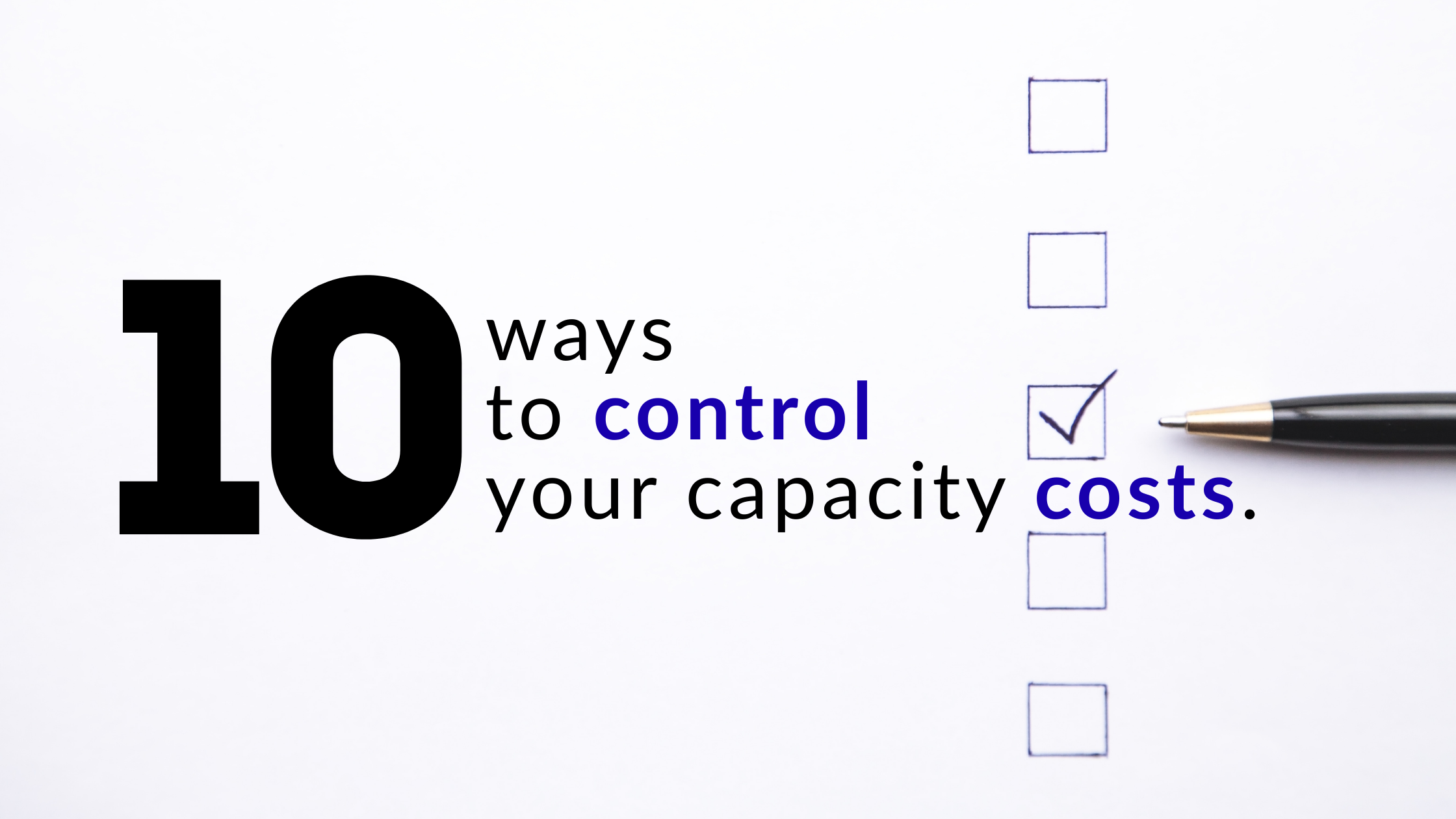
Ten Ways to Control Your Business Capacity Costs
With PJM’s capacity prices surging, businesses need practical, actionable ways to control their capacity cost. It's not necessary to overhaul an entire energy strategy to start seeing results. Here are ten steps business leaders can take to mitigate capacity charges and protect their bottom line.
.
1. Understand Peak Load Contribution (PLC) Tags
PLC tags determine a business's share of capacity costs. Start by reviewing how tags are calculated and when peak demand typically occurs. PJM determines a business's capacity tag based on its peak load contribution (PLC).
• Calculated by averaging a business's electricity use during the five highest demand hours of the year across PJM.
• These five peak hours are called the Five Coincident Peaks, or 5CP. (A snapshot of historical peaks from 2021-2024 can be found here.)
• The capacity tag (annual value) represents the business's share of the grid's total peak demand during these times.
• The capacity tag is multiplied by the prevailing capacity rate to determine the capacity charges a business will pay over the following year (June 1 - May 31).
2. Identify Non-Essential Load
Pinpoint equipment and processes that can be temporarily curtailed during peak periods without disrupting operations.
Nonessential load refers to electricity demand that a business can temporarily reduce (curtail) without seriously impacting critical operations. In contrast, essential or critical load must remain powered to maintain safety, compliance, or core business functions. Managing nonessential load is part of demand response or voluntary load shedding strategies.
Example:
A large manufacturing facility produces automotive parts. During normal operations, it runs several production lines, along with office lighting, cafeteria equipment, and noncritical HVAC in administrative areas. During a load reduction planning strategy, the manufacturer can proactively identify nonessential loads that can be temporarily reduced or turned off without disrupting core production. The strategy may also include how operational processes can be shifted to non-peak times. By curtailing nonessential loads, the manufacturer lowers their total electricity demand during peak periods, which in turn limits exposure to capacity charges.
3. Monitor High Demand Day Forecasts
Stay ahead of peak days by subscribing to High Demand Day Alerts to prepare and plan load reductions proactively. Alternative Energy Source publishes weekly demand forecasts and issues advance email alerts when it is likely a peak may be set. Sign up is simple, just provide your email address here.
4. Educate Teams on Peak Demand Awareness
Internal communication is integral to assuring teams are trained to respond quickly to peak demand notifications by following established load curtailment plans. Consider the following elements of a load shedding team communication plan:
- Clear Written Guidelines. Develop a step-by-step load shedding plan that defines the company's essential vs. nonessential loads and specific steps for curtailment. This should Include roles and responsibilities, so each team member knows their part.
- Staff Training Sessions. Hold training workshops, using scenario exercises to show what should happen during a load shedding event.
- Visual Dashboards. Use energy dashboards in relevant areas showing current load targets and ongoing reductions.
- Email or SMS Alerts. Send automated notifications providing clear instructions.
- Post-Event Review. Send a summary of results, lessons learned, and any adjustments for future load shedding.
5. If Available, Automate Load Reduction with BMS Controls
Use a Building Management System (BMS) to automate load shedding routines. Building Management Systems (also called a Building Automation System) is a computer-based system that monitors and manages a building’s mechanical and electrical systems such as HVAC, lighting, power distribution, fire alarms/safety systems, and other infrastructure such as elevators.
6. Implement Energy Efficiency Projects
From LED lighting upgrades to HVAC improvements, efficiency projects lower overall consumption and may reduce PLC tags.
7. Consider On-site Generation or Storage
Behind-the-meter generation like solar and storage can help reduce grid reliance during periods of system-wide high demand.
8. Conduct Regular Load Profile Analysis
Analyze demand to evaluate usage patterns and identify additional curtailment opportunities.
9. Participate in PJM Demand Response
Enroll in Demand Response programs to voluntarily reduce electricity use during peak grid demand in exchange for financial incentives. During years without called events, a "test" takes the place of the event. In either scenario, participants curtail use and drop load to a pre-agreed upon amount.
10. Partner with an Energy Management Advisor
Work with a trusted energy partner like Alternative Energy Source to build a tailored capacity cost mitigation strategy aligned with your operations.
Schedule an Initial Capacity Load Reduction Strategy Session
Featured posts